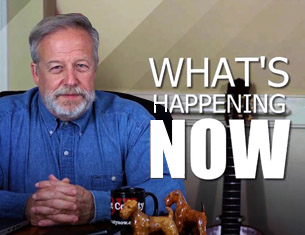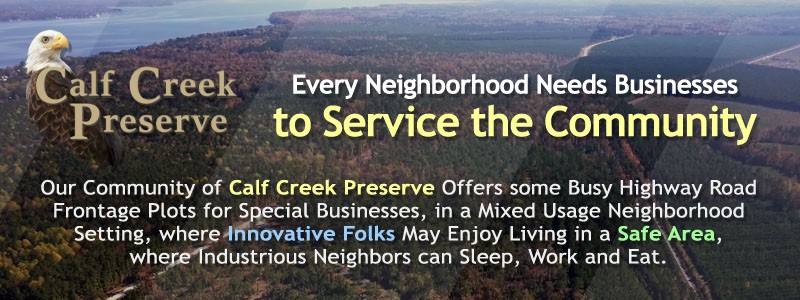Your Basic Needs: Food, Shelter and The TRUTH
Press Briefing by Vice President Pence and Members of the Coronavirus Task Force | November 19, 2020
I want to invite Dr. Redfield to come forward to speak about that, but I want to emphasize what he's reminded our task force of many times: that, actually, at no point in this pandemic has the CDC ever recommended closing schools. And the more we've learned about this virus, the more it's simply affirmed that we think our kids belong in the classroom. We're absolutely committed to continue to provide resources so our kids, our teachers, our administrators can safely - safely get back to school.
But with that, let me introduce Dr. Redfield and, with him, Dr. Elinore McCance-Katz at HHS, who is an extraordinary leader. She's going to speak about the unintended consequences of shutting our kids out of the classroom around America. And then I'll have the Secretary have some closing remarks.
Dr. Redfield?
DR. REDFIELD: Thank you, Mr. Vice President. I think it's important first for me to emphasize what you've heard already, is that we're not defenseless against this virus. Masks works. Social distancing works. Hand washing works. Being smart about crowds, particularly indoor, works. The strategic use, as Dr. Birx said, of testing to identify the silent epidemic, to identify the asymptomatic infection so that they can be pulled out of the transmission cycle, works.
Another point that I want to make is that we need to follow the data. We should be making data-driven decisions when we talk about what we're doing for institutions or what we're doing for commercial closures.
For example, as was mentioned, last spring, CDC did not recommend school closures, nor did we recommend their closures today. I will say, back in the spring, there was limited data; today, there's extensive data that we have - we've gathered over the last two to three months - to confirm that K-through- 12 schools can operate with face-to-face learning, and they can do it safely and they can do it responsibly.
The infections that we've identified in schools, when they've been evaluated, were not acquired in schools. They were actually acquired in the community and in the household.
Today, as Dr. Birx said, our big threat for transmission is not the public square; it's small family gatherings - family gatherings where people become more comfortable; they remove their face mask and they get together. And it's a silent epidemic that begins to transmit.
But it's not intra-school transmission. The truth is, for kids K through 12, one of the safest places they can be, from our perspective, is to remain in school. And it's really important that - following the data, making sure we don't make emotional decisions about what to close and what not to close. And I'm here to say clearly: The data strongly supports that K-through-12 schools, as well as institutes of higher learning, really are not where we're having our challenges. And it would be counterproductive, from my point of view - from a public health point of view - just in containing the epidemic, if there was an emotional response to say, "Let's close the schools."
Finally, you know, I wanted to echo what has been said by the Vice President and Dr. Fauci, is: We are seeing the light at the end of the tunnel, where we are to now. And this is why now more than ever - as was said by Dr. Birx and Dr. Fauci and myself, now more than ever, we're asking all Americans, all Americans to redouble their efforts to be vigilant, to embrace masks, social distancing, hand washing, our advice about crowds, and really to support using the data to make decisions in their communities, particularly as relates to K-through-12s and institutes of higher learning. These clearly - the data support that it's really important, from a public health perspective - both from the pandemic, as well as what you'll hear about in a minute - that these schools stay open.
Finally, I just want to end on a clear message of confidence: That I'm confident that we're going to emerge successful and bring this pandemic to an end. I don't have any doubt in that.
But today we need - we need all of us to go all in. Go all in with face coverings, social distancing, hand washing, smartness about crowds, doing our part to help identify the silent epidemic. And I have confidence that at the end of the day, we're going to get a very achievable goal, which is to get this pandemic under control.
Thank you, Mr. Vice President.
THE VICE PRESIDENT: Thank you.
Elinore?
DR. MCCANCE-KATZ: Thank you, Mr. Vice President. In my role as Assistant Secretary for Mental Health and Substance Use, I feel very strongly about the need to protect and promote the mental health of all Americans. As a psychiatrist, I'm continually thinking about the mental health effects of this unprecedented situation and how best to mitigate the impact.
Individuals across our country are living with stress that they have likely never experienced. We must find a way to best alleviate that stress, without ignoring the fact that our nation faces a very real and deadly virus. I often think about this in the context of our country's children. I lead the Substance Abuse and Mental Health Services Administration, or SAMHSA, which is the only federal agency whose primary charge is addressing mental and substance use disorders across the country. Where better to start in addressing this challenge than with our nation's young people?
Protecting and also fostering the social and emotional wellbeing of children is critical not only to their own development, but also to the development of healthy families, communities, and a healthy and productive society.
The work that schools and school personnel do daily is valuable beyond any words I can deliver. We know that in addition to education, schools provide our children a profound sense of security and stability. The structure and safety of schools are integral to our children's whole health. The role of the school cannot be overstated.
However, we also cannot overstate the need to address the fear, uncertainty, and safety considerations with returns to school. I understand that parents and teachers may feel great anxiety. That is why we must put into place the safety measures we know work: We must use masks. We must enforce social distancing. We must employ creative and innovative ways to limit the number of children and teachers in the building at any given time. There are tools we have, and we must think through how best to use them to keep our schools open.
We know that over 7.4 million children in this country live with serious emotional disturbances, and over 60 percent receive services from the school system. We know that children with disabilities are losing ground with the closure of schools. We know that millions of children across the country are experiencing child abuse and neglect that goes undetected due to lack of contact with school personnel who serve as mandatory reporters. We must work together to address these issues.
I believe strongly that we need schools to open in communities whose data indicate it's safe to do so. But we cannot forget the protection of our teachers and school staff. If they don't feel it's safe to return to work, it will not help to open schools. We must ensure that teachers, school staff, and parents are engaged in the solutions that we ultimately choose.
Just as I'm suggesting that we engage our teachers, I suggest also that we recognize the very real mental health considerations of what you may have heard called "pandemic fatigue." The engagement of Americans all over the country in slowing the spread of the virus is a strategy I think we should all consider.
Again, we know masks work, but we know that some Americans aren't sure and may not be as compliant as we'd like. This is gravely frustrating for local officials. But rather than punishing or sanctioning, what if we employ a different technique? What if we recognize the psychological aspects of the fatigue and try to reinforce positive behavior with rewards, rather than solely sanction what we deemed to be bad behavior.
For example, we know that compliance on college campuses has been a challenge, and individuals in this age group are a potential source of spread. What if colleges implemented a random reward system for mask wearing? This could be as simple as implementing a small gift card being given out to a student wearing a mask. This technique, known as "contingency management," has had great success in the behavioral healthcare treatment communities. I offer it as a consideration which acknowledges the psychological aspects of our life's changes.
I want to conclude by saying that the physical effects of coronavirus are very real. And this virus has brought along with it stress, anxiety, and fear that you may have never felt before. COVID-19 has brought devastating loss of life to families across the nation.
In addition to those who have lost lives to the infection itself, there are those of you who have what I call "COVID-related deaths" in your family. These are not deaths by infection, but death by suicide or death by drug overdose during this pandemic. Please know that we have not forgotten you or your loss: Your loss is great. And my job is to do all I can to prevent additional families from experiencing that loss.
To the parents and teachers who are afraid and confused, that fear and anxiety is real and it's stressful. To the people who are without a job and unsure of your next steps, your stress is real too. The stress of this situation can often feel too great to handle, and we take very seriously the need to ensure that all Americans know that there is help and there is hope. We are doing all we can to ensure that the mental healthcare system in our nation remains open and ready to serve.
As you struggle with these great stressors, especially during the holiday season, please try to stay connected to loved ones. Please reach out to friends and family.
And please know that SAMHSA's National Suicide Prevention Lifeline is available to help at any time at 800-273-8255. That's 800-273-TALK. Your mental health is critically important, and we want to do all we can to protect it.
THE VICE PRESIDENT: Mr. Secretary?
SECRETARY AZAR: Well, thank you, Mr. Vice President. Good to see all of you. The doctors have well covered the serious state of the epidemiological evidence that we have, and they've talked about the steps that we can and should be taking, but they've also talked about the steps that aren't evidence-based that we should not be taking right now.
We are much better prepared today than we were months ago. General Sanford talked about our PPE supplies, our ventilator supplies.
The Vice President talked about our expanded testing capacity nationwide reach of over 120 million tests available in the month of November alone, 70 million of them point-of-care tests.
We've improved dramatically our quality of care at our hospitals, our ability to treat people who suffer from COVID.
My message to the American people is to hang in there with us. Take the simple steps that the doctors have talked about today because there is light at the end of the tunnel. This isn't forever.
Thanks to President Trump's Operation Warp Speed, we have got such a brighter future ahead, and I want to see everyone get there.
President Trump called me in and said, "Alex, all the experts are saying it's going to be, optimistically, 18 months for a vaccine, over a year for therapeutics. You know the drug industry; you know drug development. Could we shorten that? Is there anything we could do?" And I said, "Yes, there is."
And we crafted the greatest biopharmaceutical research development, manufacturing, distribution, mobilization in partnership with the Defense Department. And with the constant, personal, unwavering support of President Trump, we're delivering results on that. And this is thanks to the leadership of people like General Perna running Operation Warp Speed, bringing the complete logistics and operations and procurement power of the Defense Department to the table. And it's thanks to people like Dr. Moncef Slaoui, probably the world's greatest vaccine developer, who's dedicated his complete life and talents to this work for the American people. And we're seeing the results.
They said it couldn't be done. But 10 months into this novel pathogen hitting our shores, last week we approved Eli Lilly's monoclonal antibody. We shipped product that very afternoon to patients. And already, over 60,000 courses of therapy have been delivered.
Regeneron's combination monoclonal antibody is pending at the FDA right now. And as we've talked about, over the last two weeks we've seen just unprecedented historic news about vaccines - two vaccines, each with 95 percent efficacy, rivaling the 98 percent efficacy of our measles vaccine produced in some of the largest vaccine clinical trials ever conducted in history; over 40,000 patients in each of these clinical trials, demonstrating good safety profiles. This was done in 10 - 10 months. Ten months.
Go Back
But with that, let me introduce Dr. Redfield and, with him, Dr. Elinore McCance-Katz at HHS, who is an extraordinary leader. She's going to speak about the unintended consequences of shutting our kids out of the classroom around America. And then I'll have the Secretary have some closing remarks.
Dr. Redfield?
DR. REDFIELD: Thank you, Mr. Vice President. I think it's important first for me to emphasize what you've heard already, is that we're not defenseless against this virus. Masks works. Social distancing works. Hand washing works. Being smart about crowds, particularly indoor, works. The strategic use, as Dr. Birx said, of testing to identify the silent epidemic, to identify the asymptomatic infection so that they can be pulled out of the transmission cycle, works.
Another point that I want to make is that we need to follow the data. We should be making data-driven decisions when we talk about what we're doing for institutions or what we're doing for commercial closures.
For example, as was mentioned, last spring, CDC did not recommend school closures, nor did we recommend their closures today. I will say, back in the spring, there was limited data; today, there's extensive data that we have - we've gathered over the last two to three months - to confirm that K-through- 12 schools can operate with face-to-face learning, and they can do it safely and they can do it responsibly.
The infections that we've identified in schools, when they've been evaluated, were not acquired in schools. They were actually acquired in the community and in the household.
Today, as Dr. Birx said, our big threat for transmission is not the public square; it's small family gatherings - family gatherings where people become more comfortable; they remove their face mask and they get together. And it's a silent epidemic that begins to transmit.
But it's not intra-school transmission. The truth is, for kids K through 12, one of the safest places they can be, from our perspective, is to remain in school. And it's really important that - following the data, making sure we don't make emotional decisions about what to close and what not to close. And I'm here to say clearly: The data strongly supports that K-through-12 schools, as well as institutes of higher learning, really are not where we're having our challenges. And it would be counterproductive, from my point of view - from a public health point of view - just in containing the epidemic, if there was an emotional response to say, "Let's close the schools."
Finally, you know, I wanted to echo what has been said by the Vice President and Dr. Fauci, is: We are seeing the light at the end of the tunnel, where we are to now. And this is why now more than ever - as was said by Dr. Birx and Dr. Fauci and myself, now more than ever, we're asking all Americans, all Americans to redouble their efforts to be vigilant, to embrace masks, social distancing, hand washing, our advice about crowds, and really to support using the data to make decisions in their communities, particularly as relates to K-through-12s and institutes of higher learning. These clearly - the data support that it's really important, from a public health perspective - both from the pandemic, as well as what you'll hear about in a minute - that these schools stay open.
Finally, I just want to end on a clear message of confidence: That I'm confident that we're going to emerge successful and bring this pandemic to an end. I don't have any doubt in that.
But today we need - we need all of us to go all in. Go all in with face coverings, social distancing, hand washing, smartness about crowds, doing our part to help identify the silent epidemic. And I have confidence that at the end of the day, we're going to get a very achievable goal, which is to get this pandemic under control.
Thank you, Mr. Vice President.
THE VICE PRESIDENT: Thank you.
Elinore?
DR. MCCANCE-KATZ: Thank you, Mr. Vice President. In my role as Assistant Secretary for Mental Health and Substance Use, I feel very strongly about the need to protect and promote the mental health of all Americans. As a psychiatrist, I'm continually thinking about the mental health effects of this unprecedented situation and how best to mitigate the impact.
Individuals across our country are living with stress that they have likely never experienced. We must find a way to best alleviate that stress, without ignoring the fact that our nation faces a very real and deadly virus. I often think about this in the context of our country's children. I lead the Substance Abuse and Mental Health Services Administration, or SAMHSA, which is the only federal agency whose primary charge is addressing mental and substance use disorders across the country. Where better to start in addressing this challenge than with our nation's young people?
Protecting and also fostering the social and emotional wellbeing of children is critical not only to their own development, but also to the development of healthy families, communities, and a healthy and productive society.
The work that schools and school personnel do daily is valuable beyond any words I can deliver. We know that in addition to education, schools provide our children a profound sense of security and stability. The structure and safety of schools are integral to our children's whole health. The role of the school cannot be overstated.
However, we also cannot overstate the need to address the fear, uncertainty, and safety considerations with returns to school. I understand that parents and teachers may feel great anxiety. That is why we must put into place the safety measures we know work: We must use masks. We must enforce social distancing. We must employ creative and innovative ways to limit the number of children and teachers in the building at any given time. There are tools we have, and we must think through how best to use them to keep our schools open.
We know that over 7.4 million children in this country live with serious emotional disturbances, and over 60 percent receive services from the school system. We know that children with disabilities are losing ground with the closure of schools. We know that millions of children across the country are experiencing child abuse and neglect that goes undetected due to lack of contact with school personnel who serve as mandatory reporters. We must work together to address these issues.
I believe strongly that we need schools to open in communities whose data indicate it's safe to do so. But we cannot forget the protection of our teachers and school staff. If they don't feel it's safe to return to work, it will not help to open schools. We must ensure that teachers, school staff, and parents are engaged in the solutions that we ultimately choose.
Just as I'm suggesting that we engage our teachers, I suggest also that we recognize the very real mental health considerations of what you may have heard called "pandemic fatigue." The engagement of Americans all over the country in slowing the spread of the virus is a strategy I think we should all consider.
Again, we know masks work, but we know that some Americans aren't sure and may not be as compliant as we'd like. This is gravely frustrating for local officials. But rather than punishing or sanctioning, what if we employ a different technique? What if we recognize the psychological aspects of the fatigue and try to reinforce positive behavior with rewards, rather than solely sanction what we deemed to be bad behavior.
For example, we know that compliance on college campuses has been a challenge, and individuals in this age group are a potential source of spread. What if colleges implemented a random reward system for mask wearing? This could be as simple as implementing a small gift card being given out to a student wearing a mask. This technique, known as "contingency management," has had great success in the behavioral healthcare treatment communities. I offer it as a consideration which acknowledges the psychological aspects of our life's changes.
I want to conclude by saying that the physical effects of coronavirus are very real. And this virus has brought along with it stress, anxiety, and fear that you may have never felt before. COVID-19 has brought devastating loss of life to families across the nation.
In addition to those who have lost lives to the infection itself, there are those of you who have what I call "COVID-related deaths" in your family. These are not deaths by infection, but death by suicide or death by drug overdose during this pandemic. Please know that we have not forgotten you or your loss: Your loss is great. And my job is to do all I can to prevent additional families from experiencing that loss.
To the parents and teachers who are afraid and confused, that fear and anxiety is real and it's stressful. To the people who are without a job and unsure of your next steps, your stress is real too. The stress of this situation can often feel too great to handle, and we take very seriously the need to ensure that all Americans know that there is help and there is hope. We are doing all we can to ensure that the mental healthcare system in our nation remains open and ready to serve.
As you struggle with these great stressors, especially during the holiday season, please try to stay connected to loved ones. Please reach out to friends and family.
And please know that SAMHSA's National Suicide Prevention Lifeline is available to help at any time at 800-273-8255. That's 800-273-TALK. Your mental health is critically important, and we want to do all we can to protect it.
THE VICE PRESIDENT: Mr. Secretary?
SECRETARY AZAR: Well, thank you, Mr. Vice President. Good to see all of you. The doctors have well covered the serious state of the epidemiological evidence that we have, and they've talked about the steps that we can and should be taking, but they've also talked about the steps that aren't evidence-based that we should not be taking right now.
We are much better prepared today than we were months ago. General Sanford talked about our PPE supplies, our ventilator supplies.
The Vice President talked about our expanded testing capacity nationwide reach of over 120 million tests available in the month of November alone, 70 million of them point-of-care tests.
We've improved dramatically our quality of care at our hospitals, our ability to treat people who suffer from COVID.
My message to the American people is to hang in there with us. Take the simple steps that the doctors have talked about today because there is light at the end of the tunnel. This isn't forever.
Thanks to President Trump's Operation Warp Speed, we have got such a brighter future ahead, and I want to see everyone get there.
President Trump called me in and said, "Alex, all the experts are saying it's going to be, optimistically, 18 months for a vaccine, over a year for therapeutics. You know the drug industry; you know drug development. Could we shorten that? Is there anything we could do?" And I said, "Yes, there is."
And we crafted the greatest biopharmaceutical research development, manufacturing, distribution, mobilization in partnership with the Defense Department. And with the constant, personal, unwavering support of President Trump, we're delivering results on that. And this is thanks to the leadership of people like General Perna running Operation Warp Speed, bringing the complete logistics and operations and procurement power of the Defense Department to the table. And it's thanks to people like Dr. Moncef Slaoui, probably the world's greatest vaccine developer, who's dedicated his complete life and talents to this work for the American people. And we're seeing the results.
They said it couldn't be done. But 10 months into this novel pathogen hitting our shores, last week we approved Eli Lilly's monoclonal antibody. We shipped product that very afternoon to patients. And already, over 60,000 courses of therapy have been delivered.
Regeneron's combination monoclonal antibody is pending at the FDA right now. And as we've talked about, over the last two weeks we've seen just unprecedented historic news about vaccines - two vaccines, each with 95 percent efficacy, rivaling the 98 percent efficacy of our measles vaccine produced in some of the largest vaccine clinical trials ever conducted in history; over 40,000 patients in each of these clinical trials, demonstrating good safety profiles. This was done in 10 - 10 months. Ten months.
| Beaufort County Emergency Management: COVID-19 Update (11-23-20) | News Services, Government, State and Federal | Beaufort County Emergency Management: COVID-19 Update (11-24-20) |

























